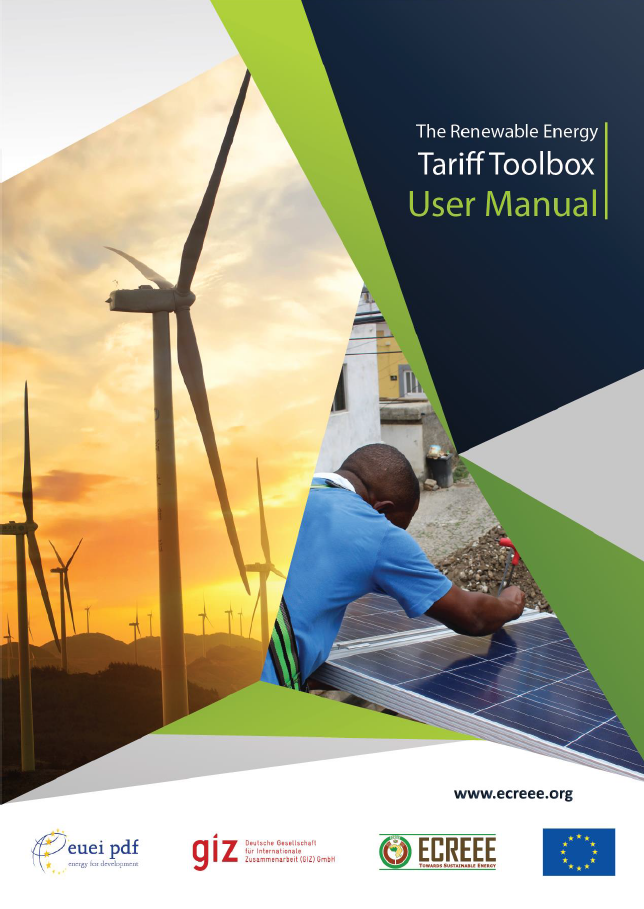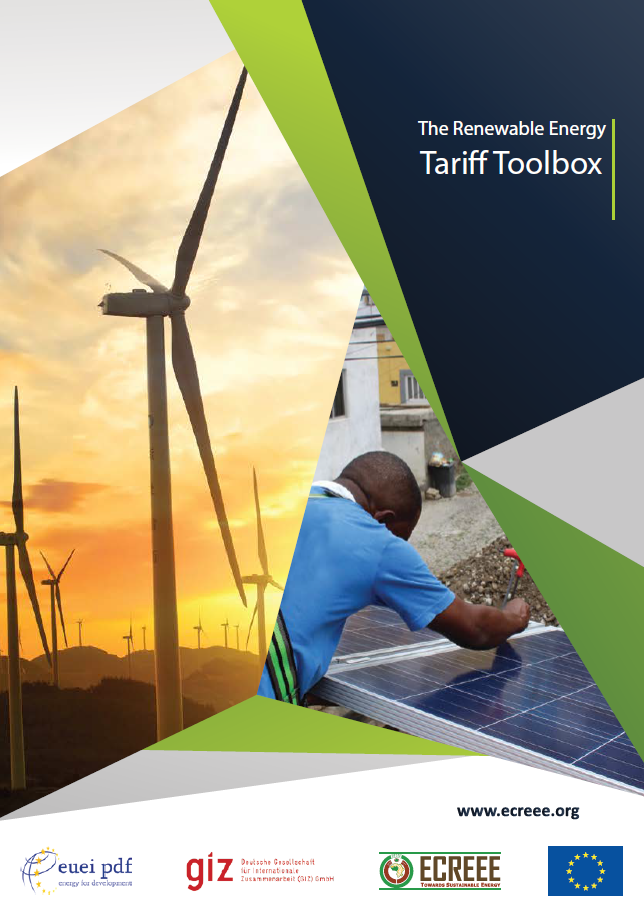Toolbox for Renewable Energy tariff calculation for West Africa
Background
The interest in low carbon renewable energy technologies is gaining momentum in West Africa. Renewable energy (RE) deployment is seen by ECOWAS Member Countries as a way to satisfy their need for power generation in a sustainable way and expand electricity access.
However, the lack of clear renewable energy policies and incentives still constitutes an important barrier for private sector participation in the RE sector. Traditionally, many project developers have to negotiate with authorities the conditions applicable to each individual project such as individual feed-in tariffs (FiT). In recent years, tenders to select independent power producers have become increasingly prevalent in the region, and government institutions as well as the potential offtakers see a need to determine acceptable tariffs. Many ministries, regulators and utilities still lack appropriate instruments and methodologies to calculate fair and transparent renewable energy tariffs. Therefore, this remains a key barrier for RE projects and the renewable energy sector development in the region.
Thus, the ECOWAS Centre for Renewable Energy and Energy Efficiency (ECREEE) and the EUEI Partnership Dialogue Facility (EUEI PDF), have joined forces to develop a set of tools that can be used to set or assess tariffs for grid-connected and off-grid renewable energy systems in West Africa.
How was it developed?
The first activity was the collection of a wide range of existing tariff modelling tools and a comparative assessment of their functions. Many of these came from technical assistance projects implemented by GIZ and EUEI PDF in West Africa and beyond.
A first regional stakeholders’ workshop was organized in March 2017 in Abidjan, Cote d’Ivoire to collect the views, needs and expectations from all the ECOWAS Member States on the features of the instrument.
The preliminary toolbox (models plus manuals) were then validated in two ECOWAS member states. Cabo Verde and the Gambia were the pilot countries and received specific technical assistance and trainings to adapt the tool to their actual needs.
The improved toolbox was then the subject of a regional training and validation workshop in Abuja, Nigeria, in July 2017. More than sixty representatives of ministries of energy, utilities, rural electrification agencies and regulatory agencies (or institutions in charge of regulation) from all ECOWAS member states participated. The comments received during the workshop were incorporated in the final version of the toolbox.
What is the content of the toolbox?
The Toolbox consists of four separate Excel models:
- IPP Model
- Green Mini Grid (GMG) model
- Prosumer model (RE systems for own consumption and injection of excess generation into the grid)
- Supply Curve model
For each of the mini grids, IPP and prosumer models there is an option to run three different cases. These are:
- A reference project calculation: it allows to consider either (1) a typical project in their country (for example an “average” solar PV project) to support setting feed-in tariffs, or (2) a specific project, for example, if there is a tender to develop in a specific location, or a speculative application from a potential developer that needs to be evaluated.
- An avoided cost calculation: it allows to compare two scenarios, one usually looking at a baseline scenario where the project is not implemented and the other looking at the scenario where the project is implemented. The cost associated with the baseline scenario where the renewable project is not implemented will provide the “avoided cost” for the renewable project. In other words, it gives a figure for what would need to be spent to deliver the energy from other sources. Using this module will allow the user to consider either (1) setting feed-in tariffs at a level that ensures that consumers pay no more for renewables than the conventional alternative, or (2) to support policy makers and regulators in understanding the cost implications of a renewable project relative to the alternative.
- A supply impact calculation: it allows to be able to compute what would happen in the system’s economic balance if a certain level of RE penetration is targeted and achieved.
Additionally, there are two separate calculation models to help estimate wind power capacity factors and to convert fuel cost units into cost/MWh.
Models (click to download)
- IPP Model
- Green Mini Grid (GMG) Model
- Prosumer Model
- Supply Curve Model
- Wind Power Capacity Factor Model
- Fuel Unit Conversion Tool
User Manual
Brochure
Contacts
ECREEE:
- Nicola Bugatti - nbugatti(at)ecreee.org
- Jansenio Delgado - jdelgado(at)ecreee.org
EUEI PDF:
- Crispen Zana - crispen.zana(at)euei-pdf.org



